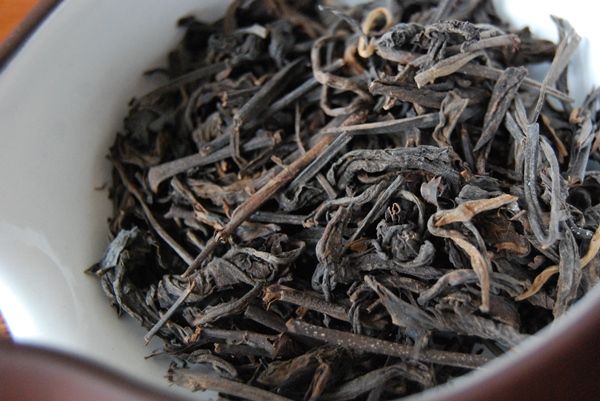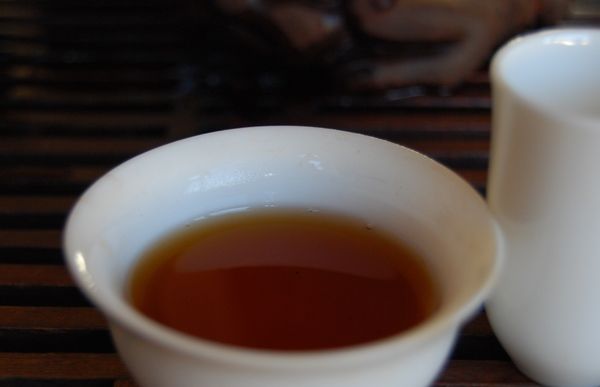Today's article is an oddity, because it represents a whole series of tea sessions, the focal point of which was this 1970s Tongqinghao. The article exists really as a testament to the generosity of my long-time teachum from Hong Kong, KC.
Tongqing was a famous teahouse during the 18th century, so they say. There is, unsurprisingly, a modern brand trading under the same name. However, this modern brand is really quite modern, being founded within the last decade or so, and so we are left with the mystery as to the exact identity of this cake.
The photograph above reminds me of the charming, long, winding nature of these old leaves. They bring back to mind the scent of age. The leaves are, more or less, the same age as the drinker. (Perhaps more - but not by too much!)
Packed full of smooth, powdery, granular characteristics, this Tongqinghao cake, whatever its origin, has resulted in many happy sessions. These periods typically start at home, at the tea-table, and then the used leaves accompany me to my lab for brewing in the background, where I appreciate them over long hours.
So, to Mr. KC I send my most grateful thanks for a tea that has been treasured.
It is worthwhile recalling that Tongqinghao and Tongxinghao are different enterprises, although both are brands that have ancient and modern counterparts.
It is worthwhile recalling that Tongqinghao and Tongxinghao are different enterprises, although both are brands that have ancient and modern counterparts.



7 comments:
Looks like your typical border-tea loose leaves traditionally stored stuff.
It is at that. Unlike some, though, it does last nicely - I can drink it all day, which is quite a rarity. I can remember the warming feeling in the belly that comes with it, too.
Good stuff!
Toodlepip,
Hobbes
Stopping in to say hello again after an extended leave from the blogging world. Love your blog, photography, and writings. Have I ever mentioned you are lucky? You often mention your wife sharing tea with you. My wife unfortunately thinks tea is nasty, but I am working on her. Keep drinking.
Pbr
Dear PBR,
Thanks for the comment; It's nice to see that you're back, and writing your blog.
My wife tends to drink English tea, most of the time, or lapsang souchong if she's feeling in the mood. Most often, she just has a little cup from mine in passing. It's helpful to get her thoughts, though, because she often finds things that I miss, or puts a name to something that I'm struggling to verbalise.
Toodlepip,
Hobbes
How do you call the 'object' in which you present the tea in your first picture? I tried to find something similar but so far have not succeeded. Is it only used to display/smell the tea before brewing it?
I'm a long time reader and you've really got me into pu and my wallet doesn't like you. ;-)
Thanks,
JR
Dear JR,
That's my chahe (pronounced "char her"). You can find similar examples from the usual merchants - I just looked at Yunnan Sourcing and see that Scott has one listed under "Tea Hardware -> Presentation Vessels". My particular chahe came from Imperial Teahouse in San Francisco, kindly bought for me by a friend (after whom I named the chahe, in fact!).
Why bother with a chahe? I'm not one for pointless ceremonial equipment, but having somewhere bowl-like to store your leaves, but which has a funnel-shaped outlet for easy pouring into the pot, is very useful. I would find it annoying without one, I suspect, having become accustomed to using it.
Toodlepip,
Hobbes
The Tongqing teahouse sounds amazing!
The more I hear about famous teahouses, the more tempted I am to go to Asia and visit myself.
My favourite thing about teahouses is the rare blends they sometimes stock.
Thank you for this informative article. I drank it up!
Post a Comment